Golden Globe: Code Red Alert
Published on October 21st, 2018
(October 21, 2018; Day 113) – The Golden Globe Race is on high alert as French skipper Loïc Lepage yesterday set off the Emergency Position Indicating Radio Beacon (EPIRB) on his yacht Laaland some 600 miles SW of Perth Western Australia.
The incident began 5 hours earlier when the French yachtsman first contacted Race HQ to report that Laaland’s mast had broken in two places while sailing in 25 knot winds and 3 metre seas.
After cutting away the rigging, the 62-year old sailor expressed some concern that one section of the mast may have damaged the hull near the keel, but that the initial ingress of water had stopped. He did not ask for assistance and was planning to set up a jury rig at first light tomorrow and sail to Fremantle unassisted.
That all changed at 18:10 UTC when Lepage made a second call to Race HQ to say his yacht was now leaking at the rate of 30 litres of water an hour from an area in the keel hidden from view by a water tank. His pumps were working and keeping up with the flow, but conditions outside had deteriorated, with winds of 40 knots.
At 18:27 UTC the Joint Rescue Coordination Centre at Canberra (JRCC Aus.) picked up a distress beacon alert and took on responsibility for coordinating a rescue mission.
JRCC issued an immediate MAYDAY relay to all shipping and at 20:30 UTC, a Challenger aircraft was dispatched from Perth with a droppable pump onboard to assess the situation and photograph the disabled yacht. The plane arrived on scene at 23:09 UTC and raised communications with Lepage via VHF radio.
Lepage advised that he was conducting repairs to his engine and did not require the pump or any other supplies to be dropped. He also stated that water ingress was at a rate of approximately 160 litres per hour but that the onboard pumps were keeping up.
The aircraft reported that the mast did not appear to be attached to the vessel, and that no other significant external damage was visible.
Throughout this period, JRCC Aus. continued to seek assistance from merchant shipping, while GGR organizers sought to communicate with other sailing vessels in the region. Due to the severe conditions, two merchant ships advised that they were unable to assist for safety reasons.
At 00:28 UTC today, an RAAF P8 search and rescue plane was tasked to overfly the area and later a civilian aircraft was relocated from Sydney to Perth to provide back-up. The Maritime Services vessel Stoker has also been placed on stand-by.
At 01:22 UTC Francis Tolan, the skipper of the S/V Alizes II, a Beneteau Ocean 43 participating in the Long Route solo circumnavigation, positioned some 300 miles NW of Laaland’s position, offered his assistance. Then at 03:14 UTC, the bulk carrier Shiosai, which had been heading west across the Great Australian Bight, also agreed to assist, and altered course towards the distress position.
At 05:07 UTC, GGR organizers spoke to Lepage via satphone. The Frenchman advised that water ingress remained at the same rate, that the onboard pumps were keeping up, and that he was not in imminent danger of sinking.
He also reported that the yacht’s engine, which had suffered some damage from water ingress into the boat, would not start, and that a jury rig had still to be set-up. Laaland continued to drift in the approximate position 38° 50.33’ S 104°15.27E, and that Lepage was seeking rescue and transfer off his vessel.
Lepage has since repaired his engine and been advised to motor in a northerly direction to shorten the distance between him and the rescue vessels. JRCC Aus. intends to utilize the MV Shiosai and SV Alizes II as surface rescue assets and to keep Stoker on stand-by until tomorrow when a decision will be made based on a re-assessment of weather conditions and progress of Shiosai and Alizes II overnight.
In addition, an RAAF P8 search and rescue plane will fly direct from Learmonth to the distress position with an ETA of 00:30 UTC tomorrow. Two other planes have also been tasked to provide air overwatch as required from now until the completion of the operation.
Among the eight remaining skippers in the race, leader Jean-Luc Van Den Heede continues to blaze across the South Pacific toward Cape Horn while second placed Australian born Dutch skipper Mark Slats arrived at the mandatory gate off Tasmania in daylight earlier today.
Slats took full advantage of the sunshine and warmth to dry out wet clothing and bedding and to check the rig of his Rustler 36 Ohpen Maverick.
Recalling his experiences across the South Indian Ocean, “It was pretty rough, but I’m still going and the boat is in good shape, so I am happy. The Indian Ocean has been very hard and very painful a lot of the time. They say the Pacific is much better, so I am looking forward to that!”
Describing the storm that led to Indian Abhilash Tomy and Ireland’s Gregor McGuckin being rolled and dismasted, “The seas were unbelievable, but the waves were horrific – up to 15 metres high. I copped one wave that broke over the back and filled the boat, and everything inside was wet.”
He thought he had been lucky with the weather, but then reminded himself, “I had 9 days of calms and then 5 days in a row of 40-50 knot head winds from the NE. That really got me down and I got pretty depressed…but then 10 minutes of good winds and speed and all was well again!”
When Mark set out with the GGR fleet from Les Sables d’Olonne on July 1st, he forgot to pack his gloves, but overcame this by wearing neoprene socks on his hands in bad weather and cutting up a jumper to make a pair of mittens to steer with.
“The worst damage has been to my electrics,” he conceded. “I have no way to monitor the batteries, no radio and no cassette players. I had two of these and two Walkmans but all have got wet. Only my VHF radio and AIS are still working.”
Last week, Mark thought he might have suffered a fractured rib when a toolbox flew across the cabin and hit him on the side during a knockdown. Today, this had all been forgotten. “Oh, it is not a problem. It only hurts a bit when I am lying down for any length of time.”
After the required 90 minute stopover, Slats rehoisted his sails and set off in pursuit of French race leader Jean-Luc Van Den Heede, now more than 2,000 miles closer to Cape Horn, the next big turning point.
Event details – Entry list – Tracker – Facebook
Background:
The 2018 Golden Globe Race started for 17 skippers from Les Sables d’Olonne on Sunday July 1, 2018, with the inaugural solo non-stop around the world yacht race expected to take 9-10 months to complete.
The event marks the 50th anniversary of the Sunday Times Golden Globe solo non-stop round the world race in 1968-69 when rules then allowed competitors to start from ports in northern France or UK between June 1st and October 31st.
A notable twist to the 2018 Golden Globe Race format is how entrants are restricted to using the same type of yachts and equipment that were available in that first race, with the premise being to keep the race within financial reach of every dreamer.
The rules allow for one breach of the strict solo, non-stop un-assisted circumnavigation without the aid of modern electronic navigation aids regulations that make this Race unique. However, those that do move down to the Chichester Class as if, like Sir Francis Chichester in 1966-67, they have made one stop during their solo circumnavigation.
Those who breach the rules for a second time are deemed to have retired from the GGR Event and the organisers have no responsibility or obligation to them.
Source: GGR


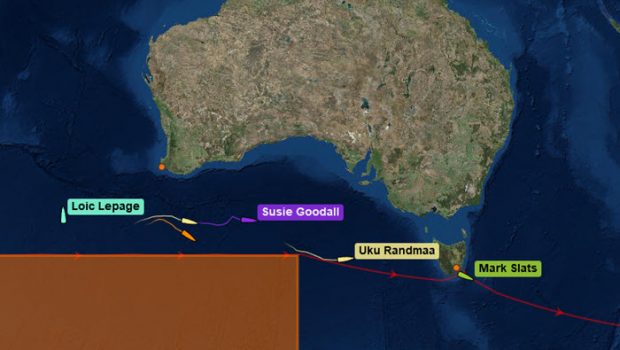


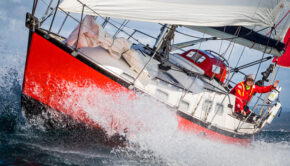
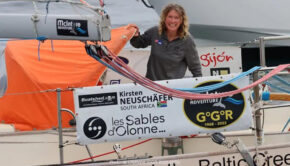
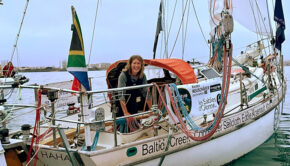
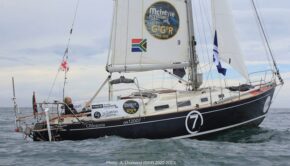
 We’ll keep your information safe.
We’ll keep your information safe.